Seven years ago, at Crystal Dynamics, I was given the opportunity to lead the stealth gameplay effort in the Tomb Raider 2013 reboot. Stealth was an area I had light level design experience in from The Bourne Conspiracy but Tomb Raider was a much more complex game. With help from a great Game Director, I was able to learn on the fly and deliver a working stealth mechanic and level design philosophy that was successfully applied across the game.
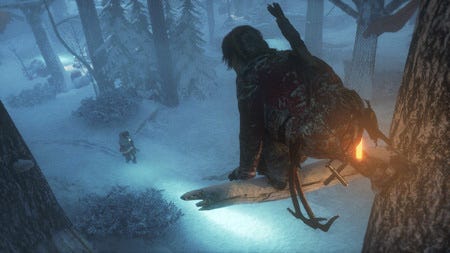
Fig: Lara Croft planning out her stealth options
What began as a small endeavor has turned into a six-year odyssey, including Battlefield Hardline and the recently canceled Visceral Star Wars game, where I have honed down my philosophy for creating fun stealth encounters. I am defining a stealth encounter as an isolated section of the game where the player is encouraged to takedown or sneak past enemies to achieve an objective.
Setting up a fun stealth encounter is very difficult and much harder to do than a combat-only encounter for two reasons:
Setting up a stealth encounter is complex and full of nuance. It is very easy to have minor issues that cause a player to completely give up on stealth and start shooting enemies. For instance, small bugs like missing cover or geometry incorrectly marked as see through can cause a player to be seen when they felt they should not be. A few frustrating instances like that can make a player give up on stealth altogether.
Designers must setup combat in the encounter as well, which means making a stealth encounter is usually twice as much work as doing a combat-only encounter.
The focus of the following article is on the complexity and nuance of setting up a stealth encounter; I am going to breakdown:
Encouraging players to play stealthily by making them understand how they can stealth an encounter
Classifying different encounters and the emotion they create
Pacing encounters in a level to keep stealth feeling fresh and exciting
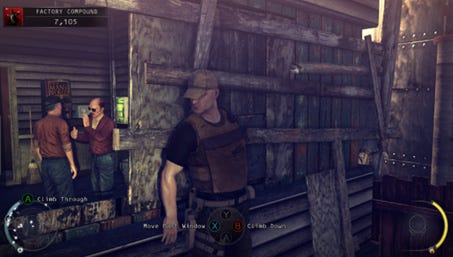
Fig: Agent 47 deciding how to handle this stealth opportunity
Encouraging Players to Play Stealthily
Stealth is kind of funny in a way because there is a group of players that will always go straight to combat, no matter how well setup an encounter is. As designers, we need to accept that about 30% of players will fall into this category. However, we still need to do our best to encourage these players to try and play stealthily and support a fun experience for the other 70% of players. Stealth opens up many different ways for an encounter to be played and provides a more varied experience to the player. To encourage players to stealth through an encounter, they need to be able to:
Have a safe and readable starting point to form a plan
Understand enemy routes and behaviors as they move through the space
Easily identify useful traversal routes through the space
Creating a Safe Readable Start Point
All stealth encounters need to start in a manner that allows the player to form a stealth plan. Follow the below rules to ensure players navigate to a safe location without engaging an enemy to form a plan:
Players should hear a sound indicating an enemies’ presence before they are seen. Dialogue works well, but it could also be the sound of characters working, moving around, or any other sound that indicates the area up ahead is alive with activity.
Players need to enter their stealth movement set if the game does not have a crouch button, otherwise ignore this rule. This is the visual indication to the player that they need to be careful. In Tomb Raider, this is when Lara gets in her crouched movement set.
There must be an obvious hiding spot for the player to move to and assess the encounter. The spot must feel safe for the player to observe what is occurring on screen.
From the hiding spot, players should easily be able to see enemies, asses their his behavior and make their plan.
If a cinematic plays, the end of the cinematic should place the player in a hiding place.
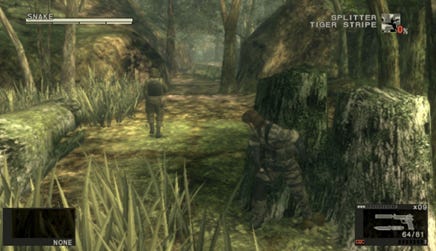
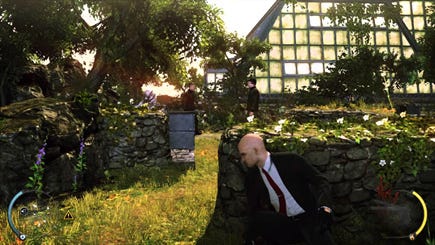
Figs: Having a hiding spot at the start of an encounter is key to letting the player make a plan to overcome the encounter
Understanding Enemy Routes & Behaviors
Poor enemy placement is an easy way to ensure a player will never stealth through your level. Enemies that are too close together, enemies pointed too much towards player sneak routes and confusing enemy paths are all common failure points. The following rules help to avoid these and other pitfalls:
Enemies placed on the outskirts of an encounter should be easier to sneak past or takedown than enemies near the objective or goal of the encounter. That ensures the encounter feels more intense as the player gets deeper into it.
Avoid bunching up enemies unless for a specific purpose. The more you put enemies within death cry distance of one another, the harder they will be to kill stealthily.
Enemies should pause every now and then when patrolling or walking around. This gives players a chance to kill or move around them.
When planning enemy movement, deliberately make moments where an enemy may separate from a group and allow a window of opportunity for players to kill them. This also makes players feel rewarded for taking their time and observing their enemies.
Use dialogue lines that inform enemy actions so the player can anticipate where enemies will move.
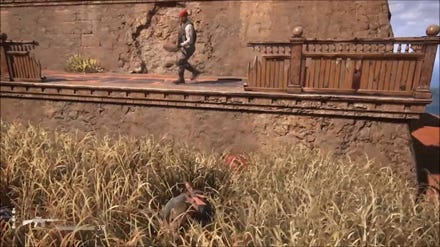
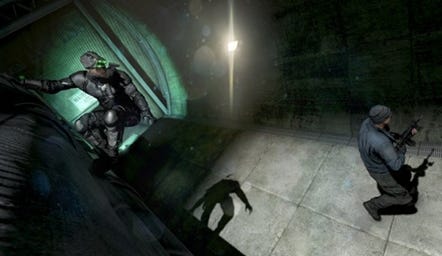
Figs: Enemies that pause in easy takedown spots are a great way to reward player patience and draw the player into a space
Utilizing Clear and Readable Traversal Routes
Players need to be able to understand how to move through a space without being seen to encourage them to move forward stealthily. Follow the below guidelines when laying out your space:
Flat stealth spaces are rarely interesting and greatly limit creative gameplay decisions in stealth. Embrace verticality in stealth spaces. Going on a path that is below or above enemies gives the player a different perspective and promotes freedom and choice within the space.



































